Discovering Puerto Rico’s Secret Reefs: An Introduction
Puerto Rico offers some of the most remarkable snorkeling experiences in the Caribbean, yet many of its most stunning reefs remain little known to the public. While the island’s popular snorkeling spots attract crowds, there are hidden gems scattered along the coastline and offshore islets that reward those willing to look beyond the obvious.
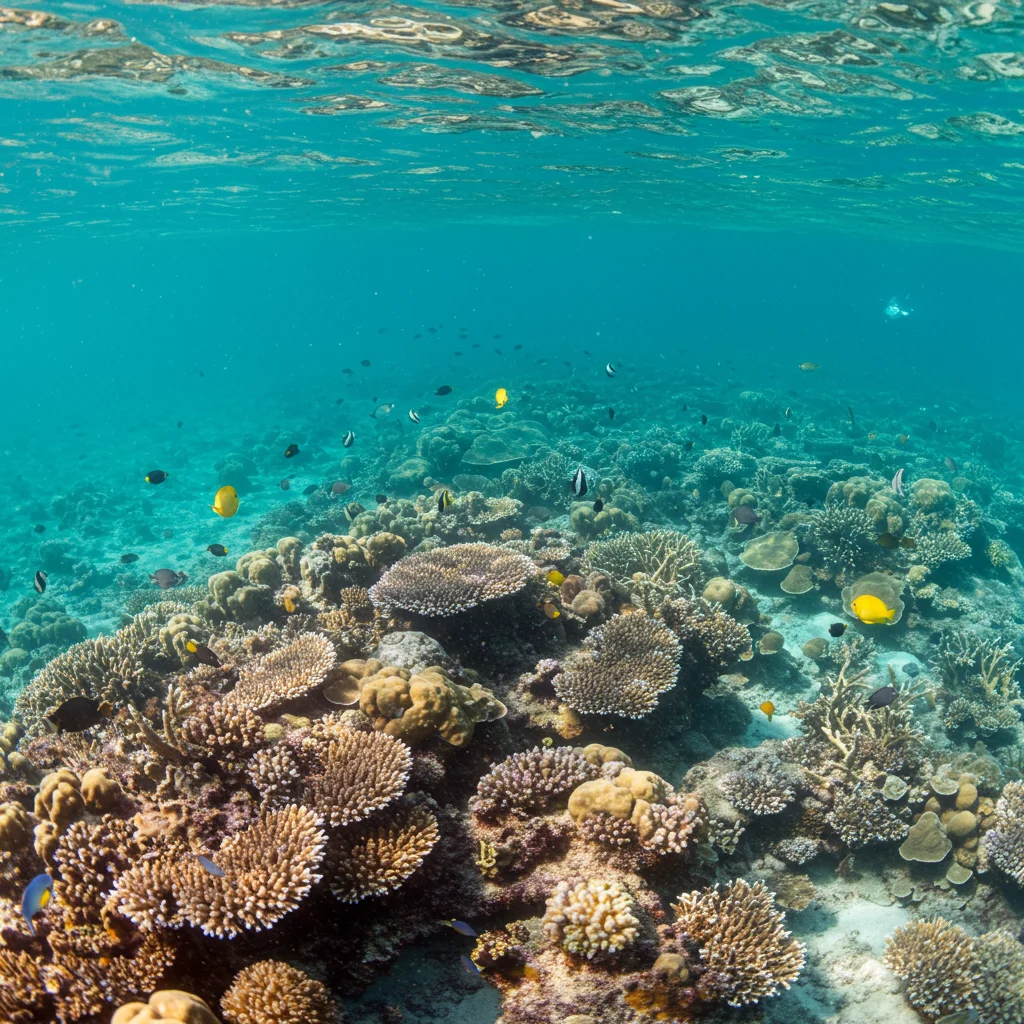
In this guide, we will share everything you need to know about snorkeling Puerto Rico’s secret reefs. Whether you are a seasoned snorkeler or a curious beginner, you will find practical tips, detailed reef profiles, and advice for responsible exploration. Our aim is to help you experience these underwater wonders while respecting the delicate marine ecosystems that make them unique.
Why Snorkel Puerto Rico’s Hidden Reefs?
Snorkeling away from the main tourist areas can transform your understanding of Puerto Rico’s coastal beauty. These secret reefs offer a sense of adventure and discovery that is hard to match at more crowded locations. They also provide opportunities to witness marine life in a more natural setting, often undisturbed by heavy human activity.
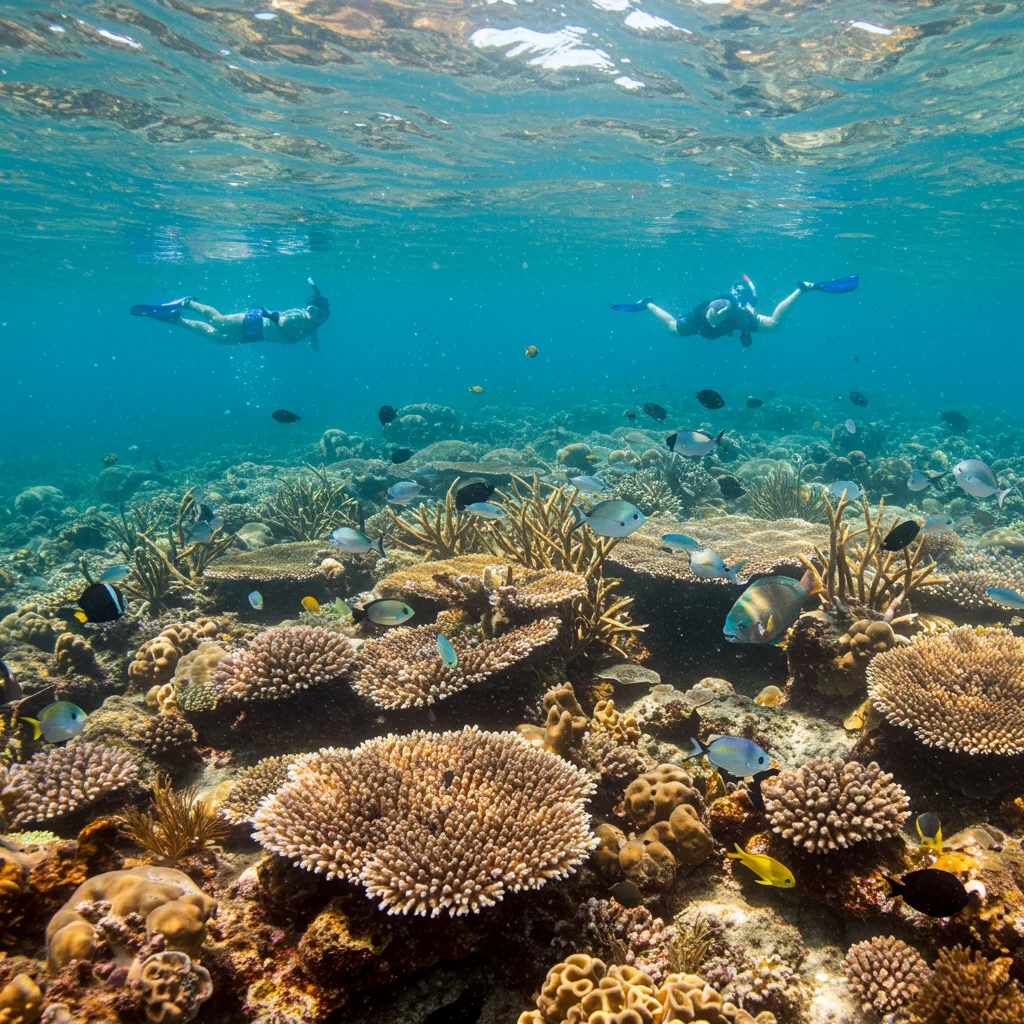
Let us examine why these reefs are so special and what sets them apart from the more frequented snorkeling destinations on the island.
What Makes These Reefs ‘Secret’?
Many of Puerto Rico’s secret reefs remain off most travelers’ radars due to their remote locations or limited access points. Some are tucked behind mangroves, while others lie just offshore, shielded by natural barriers. Word-of-mouth recommendations and local knowledge play a big role in revealing these spots.
These reefs are not featured in standard tourist brochures, and you are unlikely to find large tour groups there. Instead, they offer a quieter, more intimate snorkeling experience, often shared with just a handful of other visitors or none at all.
Benefits of Exploring Off-the-Beaten-Path Reefs
Visiting less-trafficked reefs means less competition for space and better visibility in the water. Marine creatures tend to behave more naturally when there are fewer people around, making wildlife encounters more authentic and memorable.
These reefs also tend to be healthier and more vibrant due to lower levels of disturbance. Snorkelers often report seeing larger schools of fish, more colorful coral, and even rare species that avoid busier sites.
How Do Puerto Rico’s Secret Reefs Differ from Popular Spots?
The main difference lies in the level of preservation and tranquility. Popular reefs near San Juan or Fajardo see hundreds of visitors daily, which can stress the coral and drive away shy marine life. In contrast, secret reefs often feel untouched, with lush coral gardens and abundant sea creatures.
Accessibility is another factor. While you may need to hike, paddle, or take a small boat to reach these hidden locations, the effort rewards you with a unique underwater landscape and a sense of solitude rarely found at mainstream sites. For those interested in a different type of water adventure, you might enjoy reading about how to rent a jet ski and explore the coastline in our post Freedom on Water: Rent a Jet Ski and Explore.
A Brief Overview of Puerto Rico’s Marine Ecosystems
Puerto Rico’s marine environments are as diverse as its landscapes. The island’s reefs, mangroves, and seagrass beds provide essential habitat for countless species, making it a hotspot for snorkeling enthusiasts seeking variety and color beneath the waves.
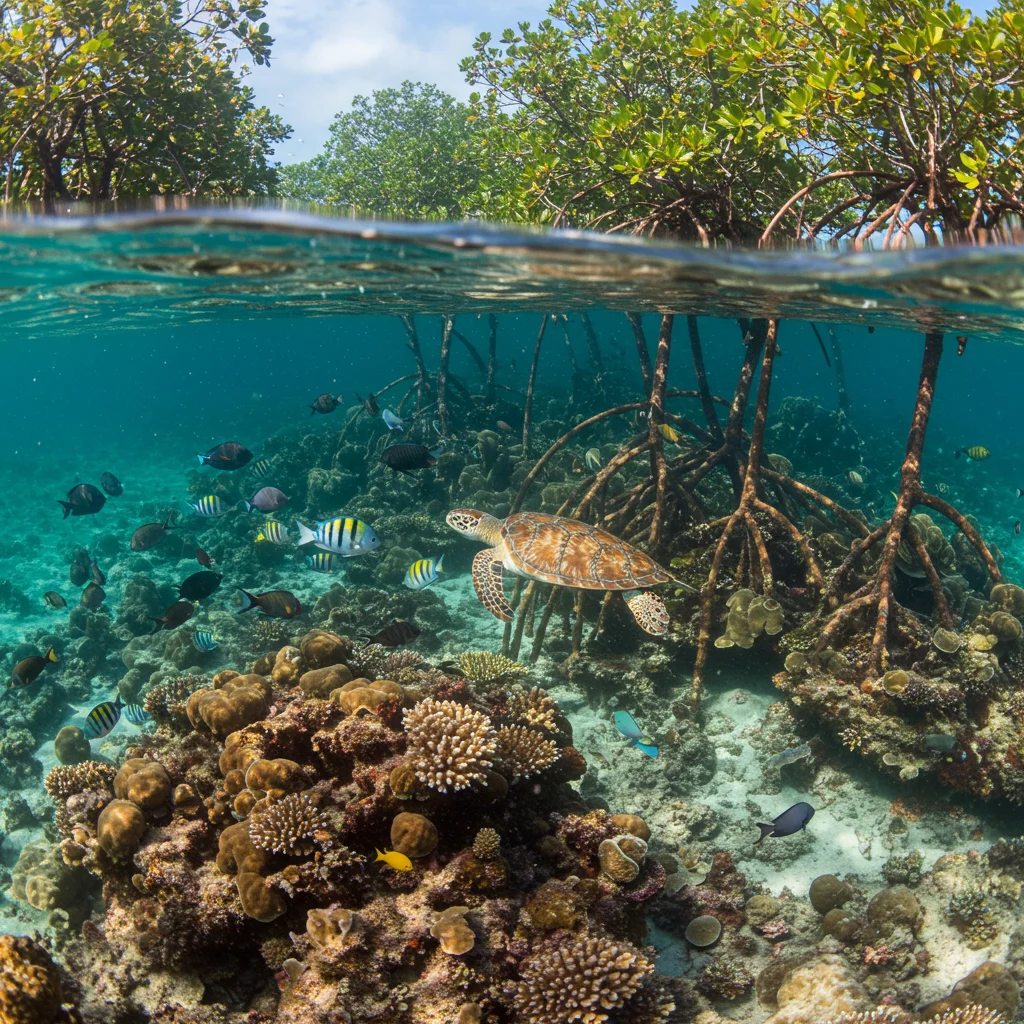
Understanding these ecosystems will help you appreciate what you see during your snorkeling adventure and guide your efforts to protect these fragile environments.
Types of Coral Reefs in Puerto Rico
Perto Rico is home to several types of coral reefs, each with distinct features. Fringing reefs hug the island’s shoreline, especially along the east and south coasts. These are the most accessible reefs for snorkelers, often beginning just a few meters from the beach.
Barrier reefs, found further offshore, act as natural wave breaks and shelter calmer waters ideal for beginners. Patch reefs, small and isolated, dot the seafloor in shallow lagoons and bays, offering pockets of rich biodiversity.
Unique Marine Life You’ll Encounter
Snorkelers in Puerto Rico can expect to see a wide variety of marine creatures. Colorful parrotfish, angelfish, and butterflyfish are common, darting among brain coral and sea fans. Eagle rays, sea turtles, and moray eels occasionally make appearances, especially in less-disturbed areas.
Some reefs are home to octopuses, sea horses, and even nurse sharks. The presence of mangroves and seagrass beds nearby increases the chances of spotting juvenile fish and invertebrates, making each snorkeling session unique.
Endangered Species and Conservation Efforts
Puerto Rico’s reefs support several threatened and endangered species, including the hawksbill and green sea turtles. Overfishing, pollution, and climate change pose significant challenges, but local organizations and government agencies have taken steps to address these threats.
Marine protected areas, coral restoration projects, and educational campaigns are helping to safeguard these ecosystems. Snorkelers play a role, too, by following best practices and supporting conservation initiatives.
Top Secret Reefs to Snorkel in Puerto Rico
Puerto Rico’s hidden reefs are scattered across the island and its outlying islets. Each location offers something different, from mangrove-lined channels to offshore coral gardens teeming with life. Let’s look at some of the top secret reefs and what makes them worth visiting.
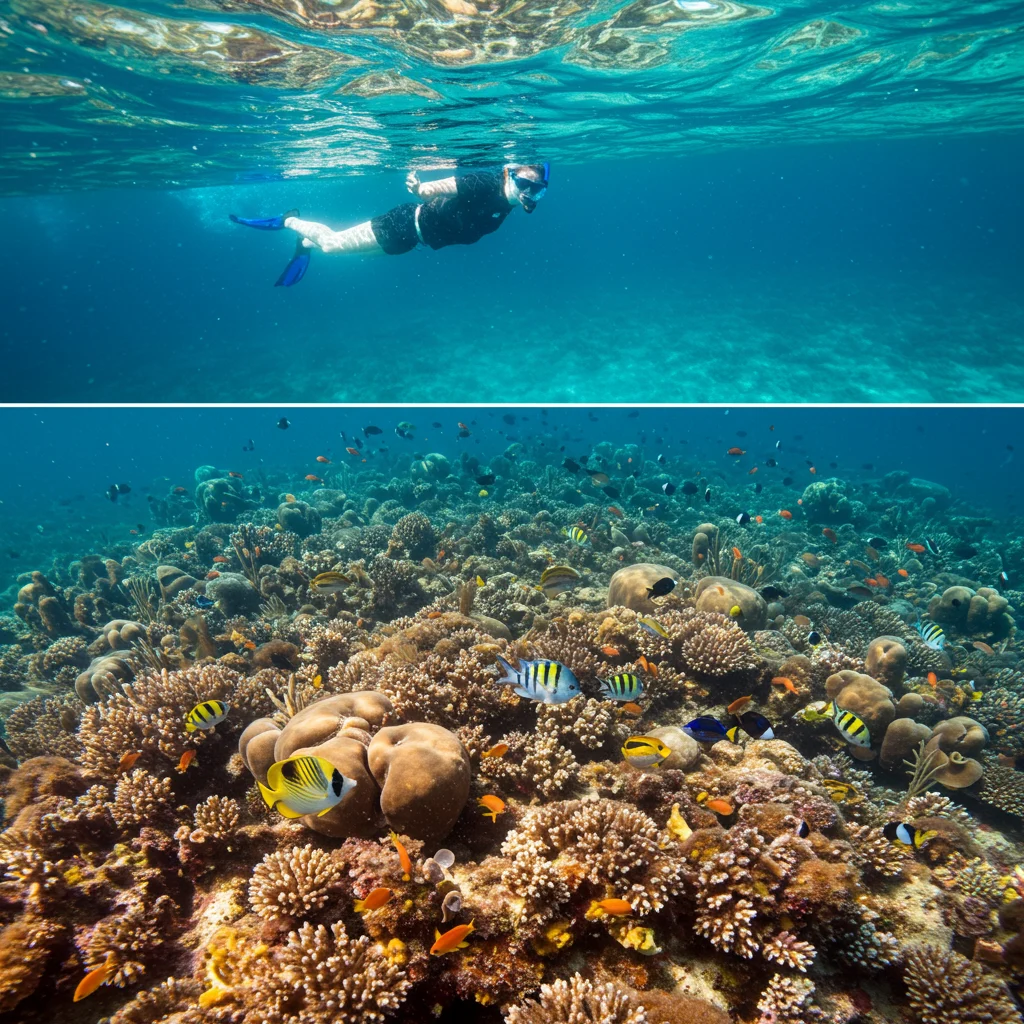
We will cover practical details, highlight the best entry points, and share local tips to help you plan your snorkeling adventure.
La Parguera: Mangrove and Offshore Reefs
La Parguera, on the southwest coast, is famous for its bioluminescent bay but also hides some exceptional snorkeling sites. The area features a network of mangroves, shallow flats, and offshore coral heads, making it a prime destination for those seeking variety and solitude.
Snorkeling here can reveal everything from juvenile fish among the mangrove roots to vibrant coral gardens further out. The water clarity is generally excellent, especially on calm days.
How to Access La Parguera’s Hidden Spots
Reaching the best snorkeling sites in La Parguera often requires a short boat ride. Many local operators offer small-group excursions to less-frequented reefs, or you can rent a kayak to paddle through the mangroves and channels.
Some of the best spots are located just beyond the main village, accessible by water taxi or private boat. Always check with local guides for up-to-date information on access and conditions.
Best Time to Visit La Parguera
The dry season, from December to April, offers the calmest seas and best visibility. Early mornings are ideal for snorkeling, as winds tend to pick up in the afternoon.
Weekdays are generally quieter, providing a more peaceful experience. Avoid visiting during local holidays when the area can become busier.
Culebra’s Lesser-Known Reefs
Culebra, a small island east of Puerto Rico, is renowned for Flamenco Beach, but its secret reefs offer just as much charm. With fewer visitors, these sites remain pristine and full of life.
Many reefs are tucked away in coves or near uninhabited cays, providing excellent opportunities for snorkeling in clear, shallow waters.
Secret Snorkeling Sites in Culebra
Some of Culebra’s best-kept secrets include areas around Tamarindo Beach, Carlos Rosario Beach, and the offshore islet of Cayo Luis Peña. These locations require a short hike or boat ride, which helps keep crowds at bay.
The reefs here are known for their healthy coral formations and abundance of marine life. Ask local guides or residents for directions to less-visited entry points.
Marine Life Highlights in Culebra
Expect to see turtles grazing on seagrass, schools of blue tang, and the occasional spotted eagle ray. The reefs are home to anemones, sea stars, and a variety of colorful reef fish.
Night snorkeling, available through local operators, can reveal octopuses, lobsters, and bioluminescent plankton for those seeking a different perspective.
Vieques: Unspoiled Underwater Paradises
Vieques, located just southeast of the main island, is best known for its wild horses and quiet beaches. Its underwater landscapes, however, remain largely unexplored by most travelers.
The island’s secret reefs are generally accessed by kayak or small boat, and their remoteness helps preserve their beauty.
How to Find Vieques’ Hidden Reefs
Many of Vieques’ best snorkeling sites are found along the southern coast or near the smaller cays offshore. Renting a kayak or joining a local snorkeling tour can help you reach these locations safely.
Popular hidden spots include Blue Beach (Playa La Chiva), Punta Arenas, and the reefs around Mosquito Pier. Local dive shops and guesthouses often have the latest information on reef conditions.
What to Expect in Vieques’ Waters
The waters of Vieques are typically calm and clear, with visibility ranging from 15 to 30 meters on good days. Coral heads, sponges, and seagrass beds provide shelter for an array of marine life.
Sea turtles are a common sight, as are stingrays, barracuda, and schools of grunts and snappers. The reefs tend to be less crowded than those on the main island, enhancing the sense of tranquility.
Rincón: West Coast’s Secret Snorkeling Havens
Rincón is famous for its surf breaks, but its snorkeling opportunities are often overlooked. The west coast’s reefs are less developed and receive fewer visitors, making them ideal for those seeking a peaceful underwater escape.
Snorkeling here is best during the summer months when the waves subside and water clarity improves.
Best Entry Points in Rincón
Top snorkeling spots include Steps Beach (Playa Escalera) and the reef near Black Eagle Road. These areas offer easy beach access and shallow reefs suitable for all skill levels.
Some locations require a short walk from parking areas, so pack light and wear sturdy sandals. Local dive shops can provide maps and updated conditions.
Local Tips for Rincón Snorkelers
Start early in the morning to beat the heat and enjoy the best visibility. Summer is the optimal season, as winter brings larger waves that can reduce snorkeling safety and clarity.
Always check the surf forecast, and avoid entering the water if strong currents or high waves are present. Local guides can enhance your experience with insights into the area’s marine life and history.
Fajardo’s Underrated Reef Spots
Fajardo, on Puerto Rico’s east coast, is a gateway to offshore islands like Icacos and Palomino. While these cays attract visitors, several lesser-known reefs offer equally impressive snorkeling without the crowds.
These sites are ideal for those looking to combine snorkeling with a day trip or boat excursion.
How to Reach Fajardo’s Secret Reefs
Accessing Fajardo’s hidden reefs usually involves a short boat ride from the marina. Several local operators run small-group trips to quieter spots, or you can charter a private boat for a more personalized experience.
Some reefs are accessible from shore, especially near Seven Seas Beach and Las Cabezas de San Juan. Always verify conditions and access points before setting out.
What Marine Life Can You See in Fajardo?
Fajardo’s reefs are home to damselfish, wrasses, and the occasional spotted drum. You may also see octopuses hiding in crevices or small sea turtles swimming in the shallows.
Snorkelers often report sightings of queen conch and starfish in the sand flats adjacent to the reefs. Visibility is generally best in the morning and after calm weather.
Essential Snorkeling Tips for Secret Reefs
Snorkeling remote reefs in Puerto Rico requires a bit more preparation than visiting mainstream sites. The rewards are worth it, but you will need to plan ahead to stay safe and comfortable.
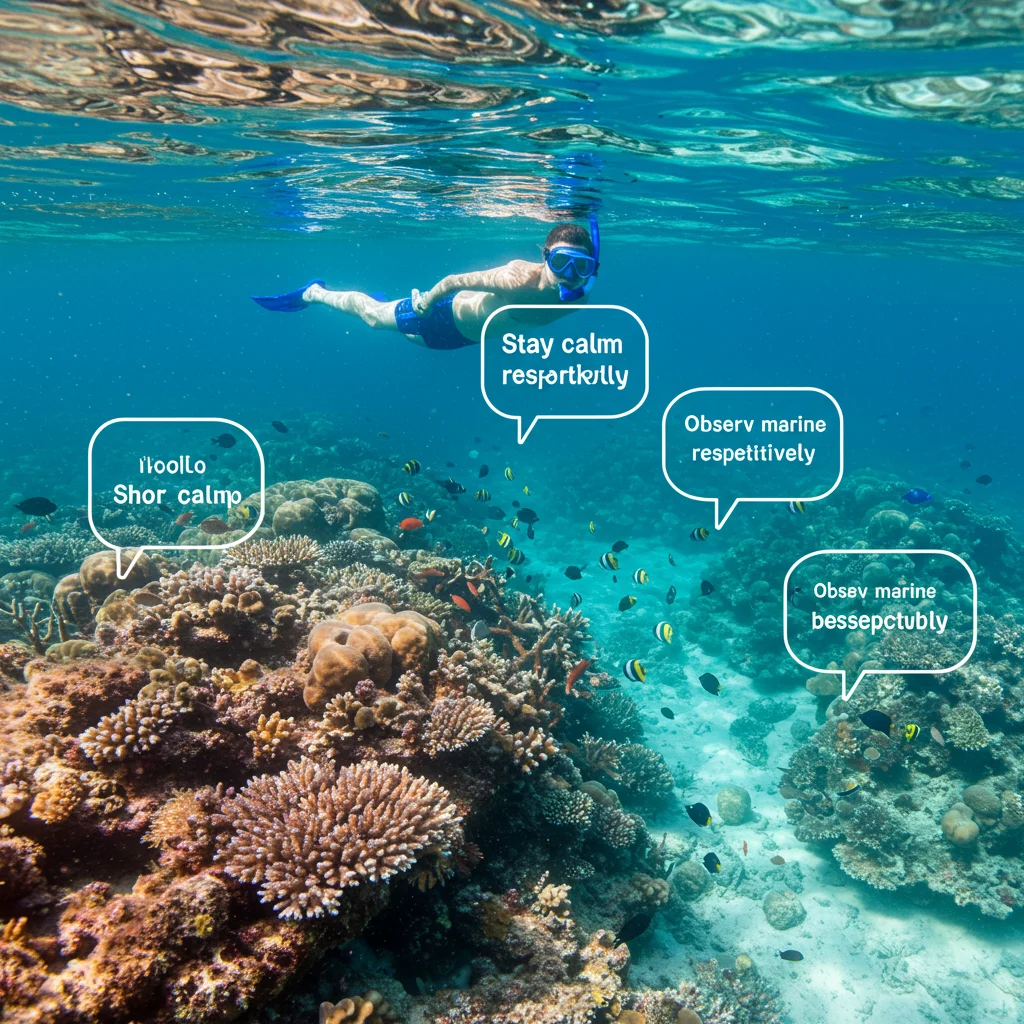
Below, we cover gear recommendations, safety tips, and advice for dealing with changing weather and currents.
What Gear Do You Need for Remote Reef Snorkeling?
At a minimum, you will need a well-fitting mask, snorkel, and fins. For longer swims or rougher conditions, a lightweight rash guard or wetsuit can help protect you from sun and stings.
Consider bringing a dive flag or surface marker buoy, especially when snorkeling away from established beaches or near boat traffic. Reef-safe sunscreen and a mesh bag for trash are essential for eco-friendly adventures.
Safety Precautions for Off-the-Beaten-Path Adventures
Always snorkel with a buddy, and let someone onshore know your plans. Be aware of your surroundings, including boat traffic, currents, and changing weather conditions.
Carry a whistle or signaling device in case you need assistance. If you are new to remote snorkeling, consider joining a guided tour for added safety and local knowledge.
How to Prepare for Changing Weather and Currents
Puerto Rico’s weather can shift quickly, especially during the rainy season. Check forecasts before heading out, and be prepared to change your plans if thunderstorms or strong winds develop.
Pay attention to tide tables and current patterns. If you notice increasing waves or a strong current, exit the water and wait for safer conditions. Local guides and dive shops are excellent sources of up-to-date information.
Guided Tours vs. Solo Exploration: Which Is Best?
When planning a snorkeling trip to Puerto Rico’s secret reefs, you will need to decide whether to go with a guide or explore on your own. Both options have advantages, depending on your experience level and preferences.
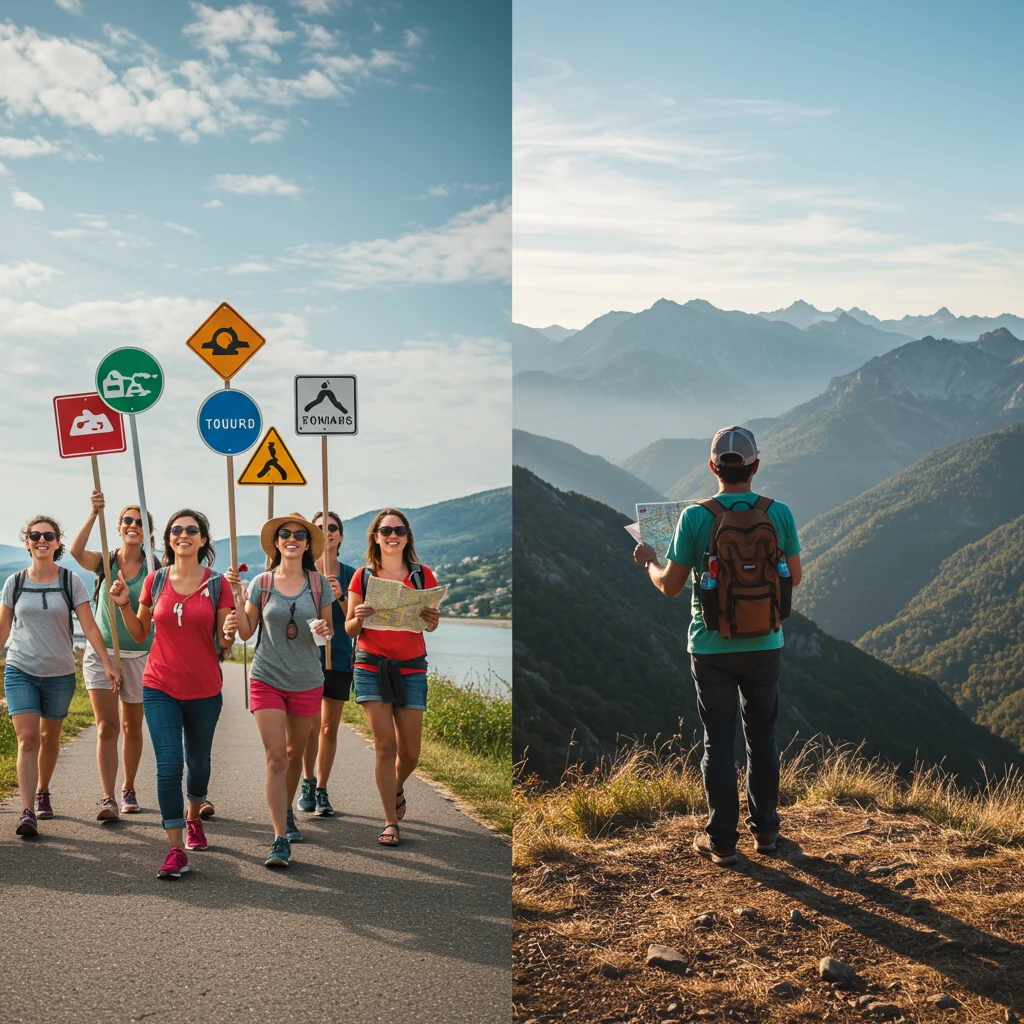
Let’s examine the pros and cons of each approach and offer advice for choosing a responsible local guide if you decide to book a tour.
Pros and Cons of Guided Reef Tours
Guided tours offer convenience, safety, and local expertise. Guides know the best entry points, current conditions, and hidden spots that even experienced snorkelers may miss. They also provide equipment and handle logistics, allowing you to focus on the experience.
The downside is less flexibility and the possibility of sharing your adventure with a group. Some tours may visit more popular sites, so be sure to ask about their itineraries if you want a truly off-the-beaten-path experience.
How to Choose a Responsible Local Guide
Look for guides who prioritize environmental protection and small group sizes. Ask about their certifications, safety protocols, and knowledge of local conservation efforts. Responsible operators should provide reef-safe sunscreen and educate guests on proper snorkeling etiquette.
Read reviews and ask for recommendations from local dive shops or guesthouses. A good guide can make your experience safer, more informative, and more enjoyable.
Can You Snorkel These Reefs Without a Guide?
Many of Puerto Rico’s secret reefs can be reached without a guide, especially if you have snorkeling experience and are comfortable with navigation. However, some sites require local knowledge or special access, making a guided tour the better option.
If you choose to go solo, research entry points, currents, and weather conditions thoroughly. Always bring a buddy, and carry safety equipment such as a signaling device or surface marker buoy.
Protecting Puerto Rico’s Reefs: Responsible Snorkeling
Snorkeling secret reefs is a privilege that comes with responsibility. Puerto Rico’s coral ecosystems are fragile, and even small disturbances can have lasting impacts.
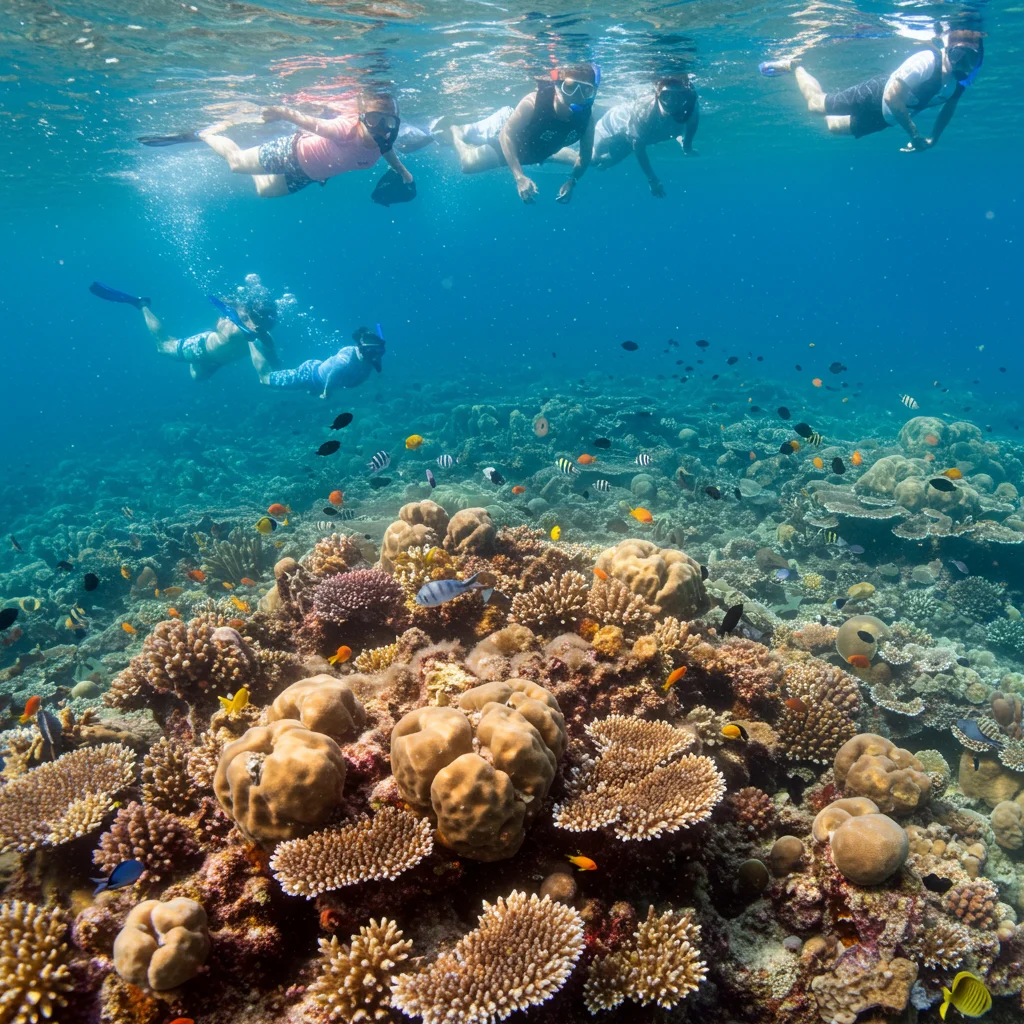
Here, we outline best practices for minimizing your impact and supporting local conservation efforts during your visit.
How to Avoid Damaging Fragile Coral
Never stand on or touch coral, as even brief contact can kill the delicate polyps that build reefs. Practice good buoyancy, and use your fins carefully to avoid stirring up sand or breaking coral branches.
Keep a safe distance from the reef, and avoid using gloves or collecting souvenirs. Encourage others to follow these guidelines as well.
Eco-Friendly Snorkeling Practices
Use only reef-safe sunscreen, as conventional products can harm coral and marine life. Pack out all trash, and pick up any debris you find in the water or on the beach.
Support local businesses that prioritize sustainability, such as tour operators who limit group sizes and participate in conservation projects. Consider bringing a reusable water bottle and avoiding single-use plastics during your trip.
What Local Conservation Projects Can You Support?
Several organizations in Puerto Rico are working to restore coral, protect sea turtles, and educate the public about marine conservation. Donations and volunteer time can make a real difference.
Ask your guide or accommodation about local projects you can support. Participating in a beach cleanup or coral nursery tour can enhance your trip and leave a positive impact.
Planning Your Snorkeling Adventure: Logistics & Travel Tips
Proper planning will help you make the most of your visit to Puerto Rico’s secret reefs. From timing your trip to choosing where to stay, a little preparation goes a long way.
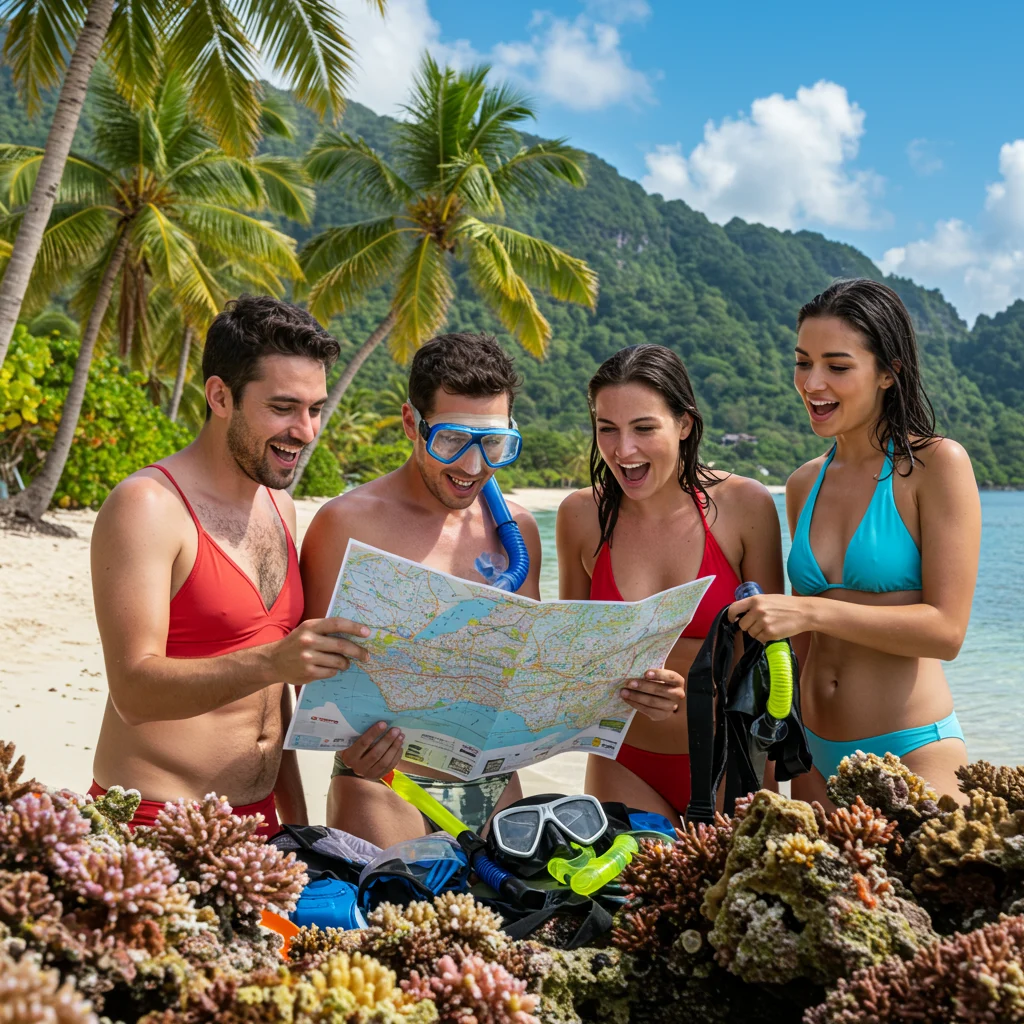
In this section, we cover the best times to snorkel, transportation options, accommodation tips, and what to pack for a comfortable and safe experience.
Best Times of Year for Snorkeling Puerto Rico’s Secret Reefs
The dry season, from December to April, offers the calmest seas and best visibility. However, the shoulder months of May and November can also provide excellent conditions with fewer crowds.
Summer brings warmer water but also the risk of hurricanes. Always check seasonal weather patterns and plan accordingly. Early mornings are typically the best time for snorkeling, regardless of the season.
How to Get to Each Secret Reef Location
La Parguera and Rincón are best reached by car from San Juan or Ponce, with well-maintained highways connecting the main towns. Culebra and Vieques require a ferry or short flight from the main island, followed by local transportation to beaches and launch points.
Fajardo is easily accessible by car from San Juan and serves as the starting point for boat trips to offshore cays. Public transportation is limited, so renting a car is recommended if you plan to visit multiple locations.
If you find yourself interested in other coastal adventures, you might also enjoy our insights into Miami’s unique tour experiences in Miami Uncovered: Vibrant Tours Beyond the Beach.
Where to Stay Near Hidden Reefs
Options range from boutique guesthouses and eco-lodges to full-service resorts. In La Parguera and Rincón, small inns and vacation rentals offer convenient access to the water.
Culebra and Vieques have a mix of budget hostels, family-run hotels, and luxury villas. Book early during peak season, and look for accommodations that support sustainable tourism.
Packing Checklist for Reef Snorkeling in Puerto Rico
- Mask, snorkel, and fins (personal gear recommended for best fit)
- Reef-safe sunscreen and a sun-protective rash guard
- Waterproof bag for valuables
- Reusable water bottle and snacks
- First-aid kit and signaling device
- Underwater camera (see our photography tips below)
- Identification and cash for small purchases or tips
FAQs: Everything You Need to Know About Snorkeling Puerto Rico’s Secret Reefs
Snorkeling remote reefs raises plenty of questions, especially for first-time visitors. Here, we answer some of the most common queries to help you prepare for your adventure.
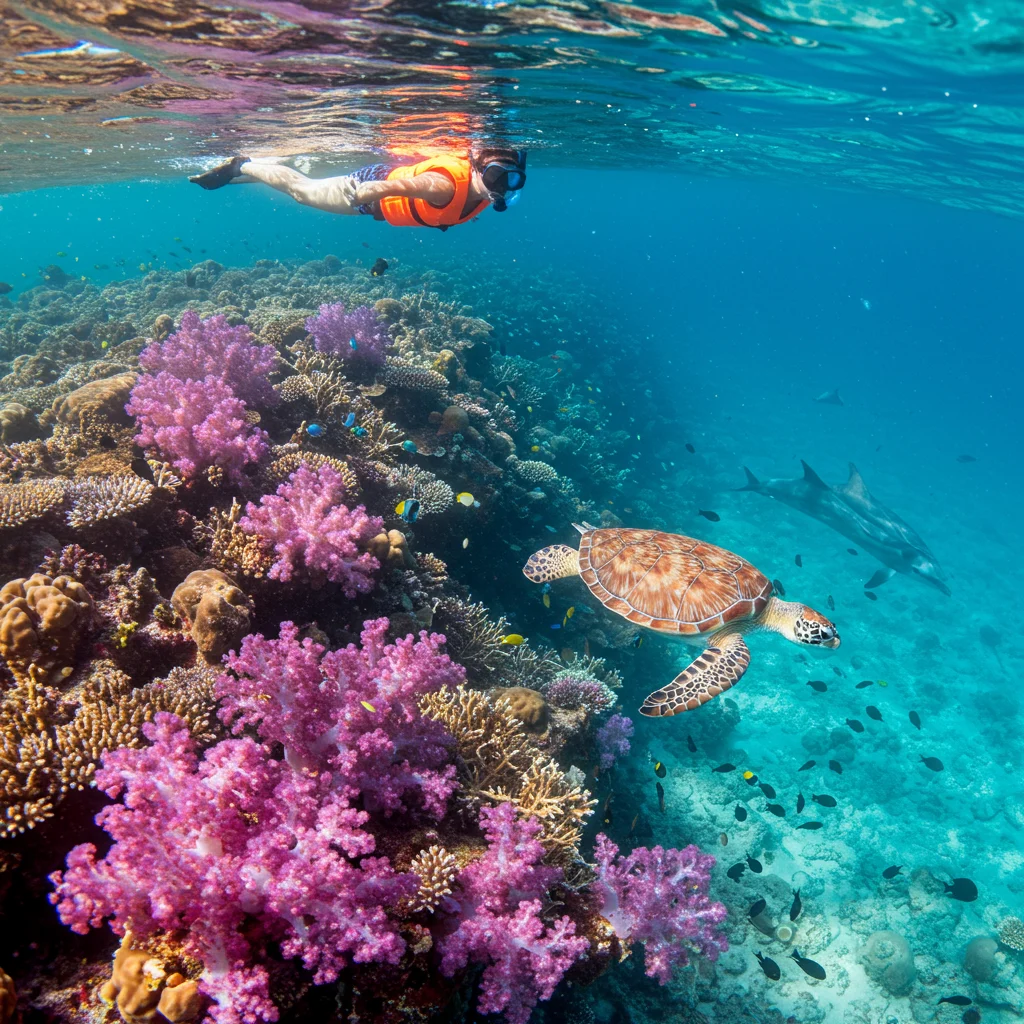
If you have additional questions, local dive shops and tour operators are usually happy to assist.
Is Snorkeling These Reefs Suitable for Beginners?
Many secret reefs feature shallow, calm waters that are suitable for beginners. However, some locations may require longer swims or boat access, so it is important to assess your comfort level and swimming ability.
If you are new to snorkeling, consider starting at an easier site or joining a guided tour. Practice using your gear in a pool or sheltered bay before venturing out to more remote areas.
What Should You Do in Case of Emergency?
If you or your buddy encounter trouble, signal for help immediately and return to shore if possible. Carry a whistle, mirror, or surface marker buoy to attract attention.
Familiarize yourself with the location of emergency services and nearest medical facilities before heading out. Always snorkel with a partner, and avoid taking unnecessary risks.
Are There Any Permits or Regulations to Know About?
Most snorkeling areas in Puerto Rico do not require permits, but some marine reserves may have specific rules or fees. Always respect posted signs and guidelines, and avoid restricted or private areas.
Fishing and collecting marine life are strictly prohibited in many protected zones. Ask local authorities or guides if you are unsure about regulations at your chosen site.
Capturing the Experience: Underwater Photography Tips
Bringing home photos of Puerto Rico’s secret reefs lets you share the experience and inspire others to protect these vital ecosystems. Underwater photography requires special preparation, but the results can be spectacular.
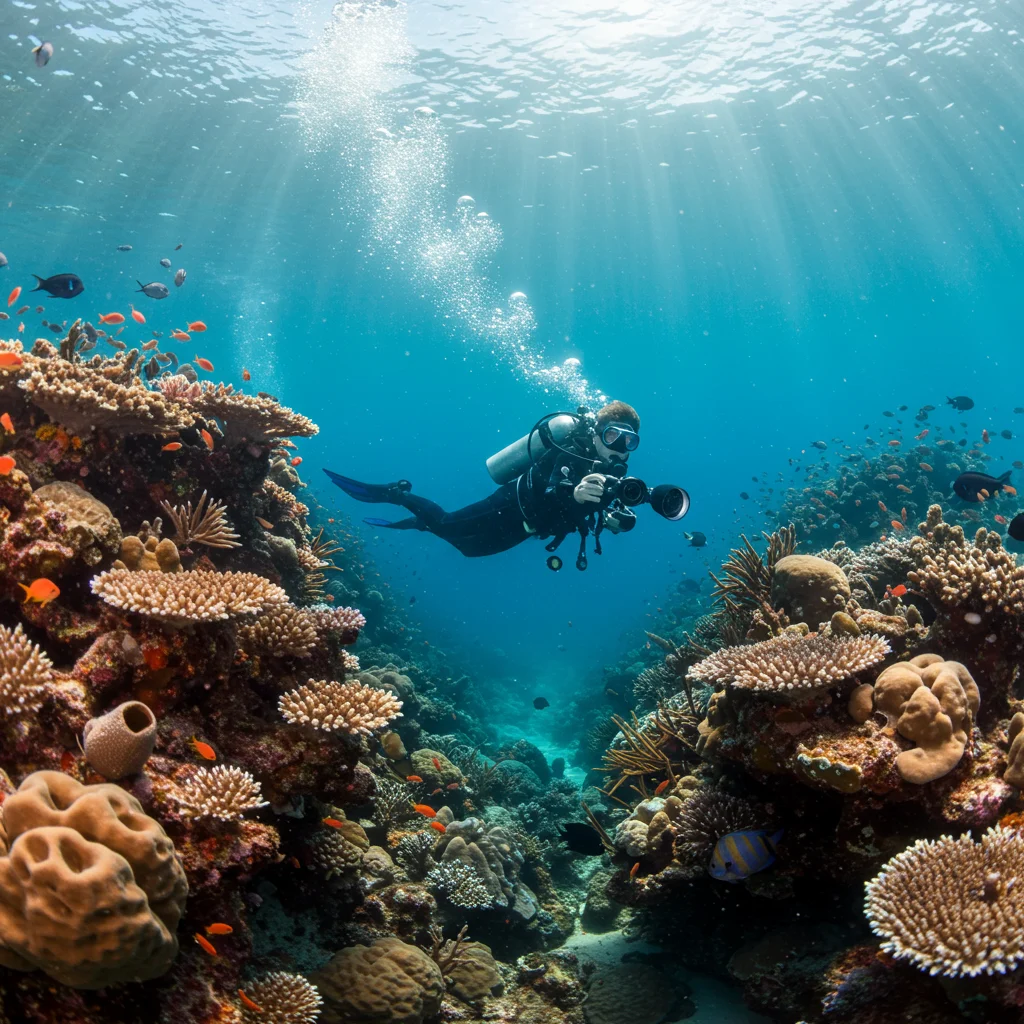
Below, we offer gear recommendations and practical advice for taking great photos while respecting marine life.
Recommended Cameras and Gear
Compact waterproof cameras or action cameras like GoPro are ideal for snorkeling. Many offer high-resolution video and stills in a lightweight, easy-to-use package.
For more advanced photographers, mirrorless or DSLR cameras with underwater housings deliver superior image quality. Bring extra memory cards and batteries, as saltwater can drain power quickly.
How to Take Stunning Reef Photos Safely
Practice good buoyancy and avoid touching the reef while framing your shots. Use natural light by shooting in shallow water and keeping the sun behind you for vibrant colors.
Approach marine creatures slowly and respectfully. Patience and gentle movements yield the best photos and help protect the reef from accidental damage.
Sharing Your Snorkeling Adventure: Social Media & Community
Social media can be a powerful tool for raising awareness about Puerto Rico’s reefs. Sharing your photos and stories not only inspires others but can also support conservation efforts and responsible tourism.
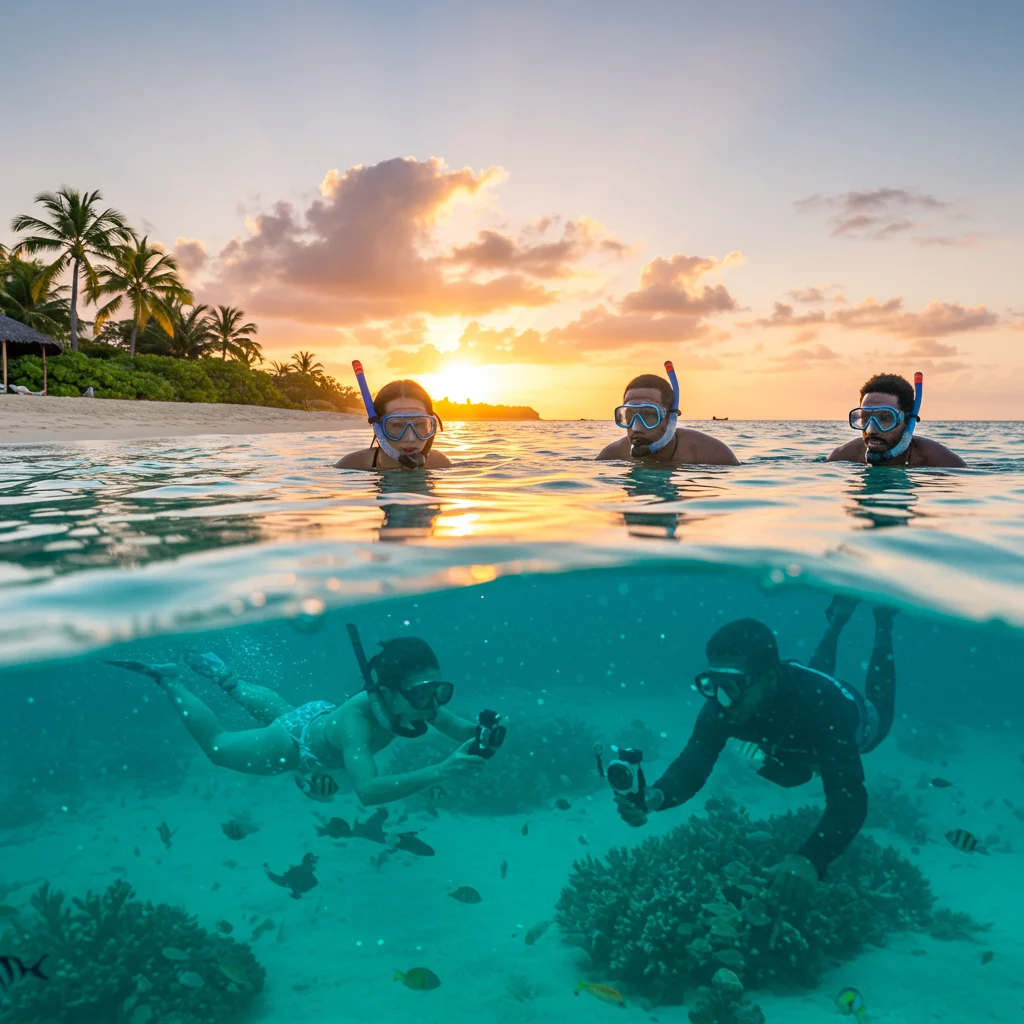
Find out how to connect with like-minded snorkelers and promote the protection of these precious environments.
Best Hashtags and Groups for Snorkelers
Use hashtags such as #PuertoRicoSnorkeling, #SecretReefsPR, and #ProtectOurReefs to reach a wider audience. Join online groups dedicated to Caribbean snorkeling, where you can exchange tips, trip reports, and gear recommendations.
Many local organizations and conservation projects maintain active social media pages. Tagging them in your posts can help spread their message and attract new supporters.
How to Inspire Others to Protect Puerto Rico’s Reefs
Share your experiences with an emphasis on responsible snorkeling and reef protection. Highlight the beauty and fragility of the ecosystems you visited, and encourage others to follow best practices.
Consider writing a trip report or blog post, or contributing to community science projects by submitting your wildlife sightings. Your voice can make a difference in the ongoing effort to preserve Puerto Rico’s marine heritage.
If you enjoy learning about the cultural and historical sides of Puerto Rico, you might be interested in our article on Wandering Through History on an Old San Juan Stroll, which provides a different perspective on the island’s treasures.
Conclusion: Why Puerto Rico’s Secret Reefs Should Be on Your Bucket List
Puerto Rico’s secret reefs offer a snorkeling experience unlike any other, combining natural beauty, tranquility, and remarkable biodiversity. By venturing beyond the well-trodden paths, you gain access to pristine underwater worlds and unforgettable marine encounters.
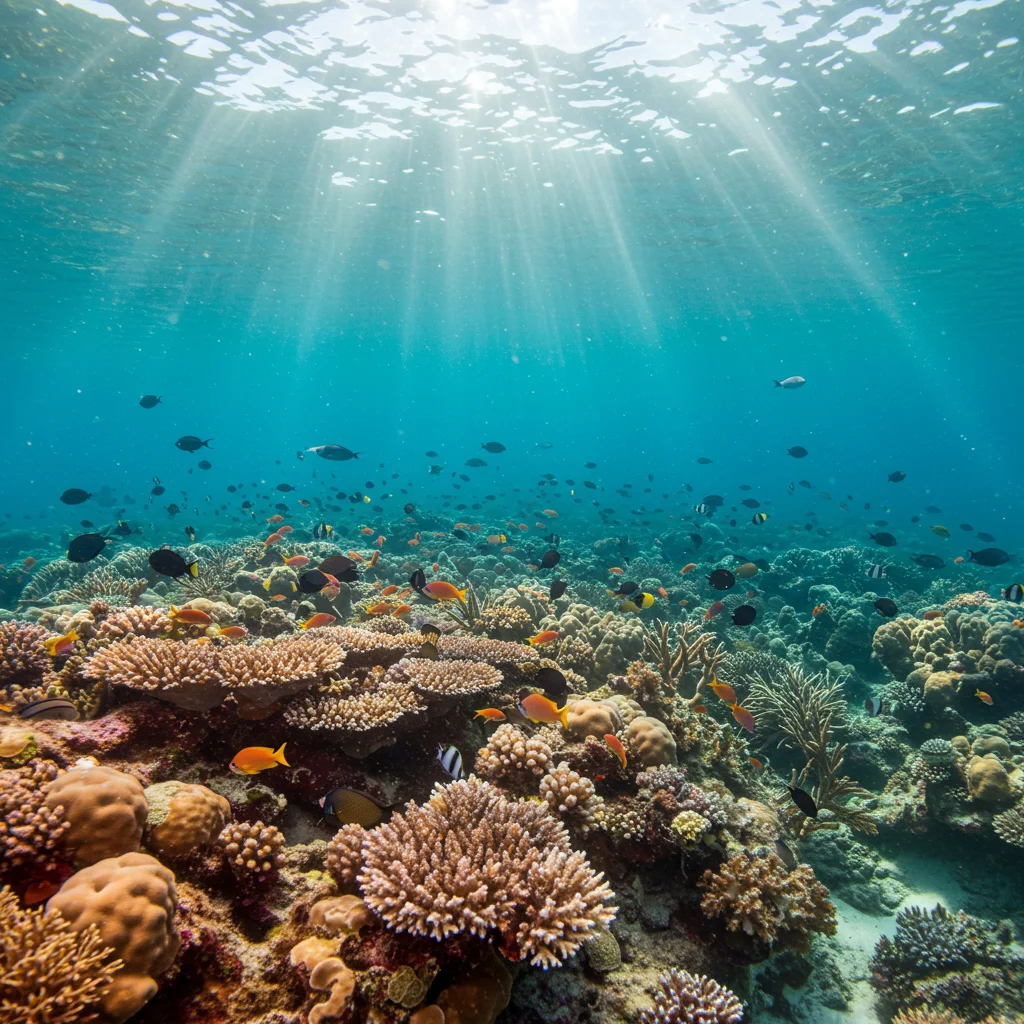
Responsible snorkeling not only enriches your trip but also helps protect these fragile ecosystems for future generations. If you are ready to plan your adventure, we recommend starting your journey with Tour Cuts for more inspiration and resources to make your trip memorable.

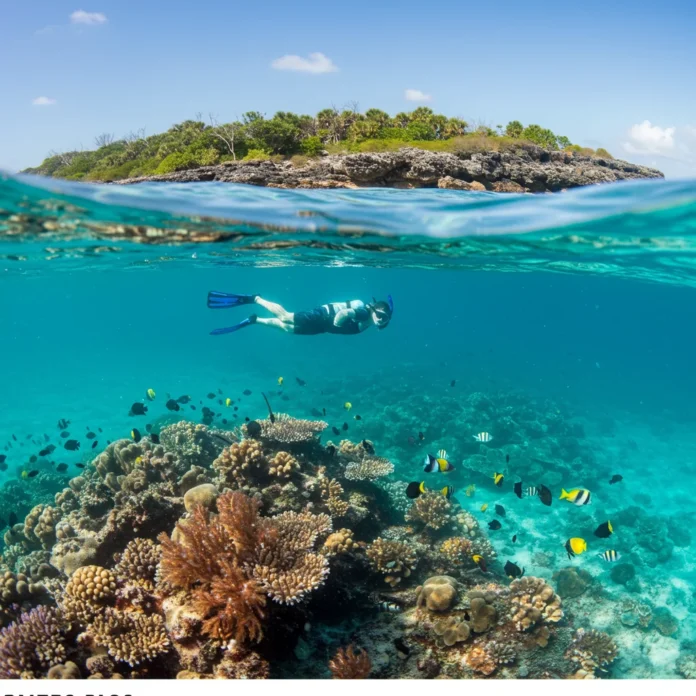
[…] The mineral content of the water gives the pools a striking blue color. Many visitors choose to bring snorkel gear to observe the underwater landscape, much like those who enjoy exploring hidden reefs, as described in our guide to Puerto Rico’s secret reefs. […]
[…] The marine landscape is further enhanced by coral reefs, small islands, and mangrove forests. These natural wonders not only create memorable backdrops for your ride but also offer opportunities for combining jet skiing with snorkeling or wildlife watching. For those interested in exploring more aquatic adventures, you might enjoy reading about Puerto Rico’s Secret Reefs and snorkeling the hidden gems. […]